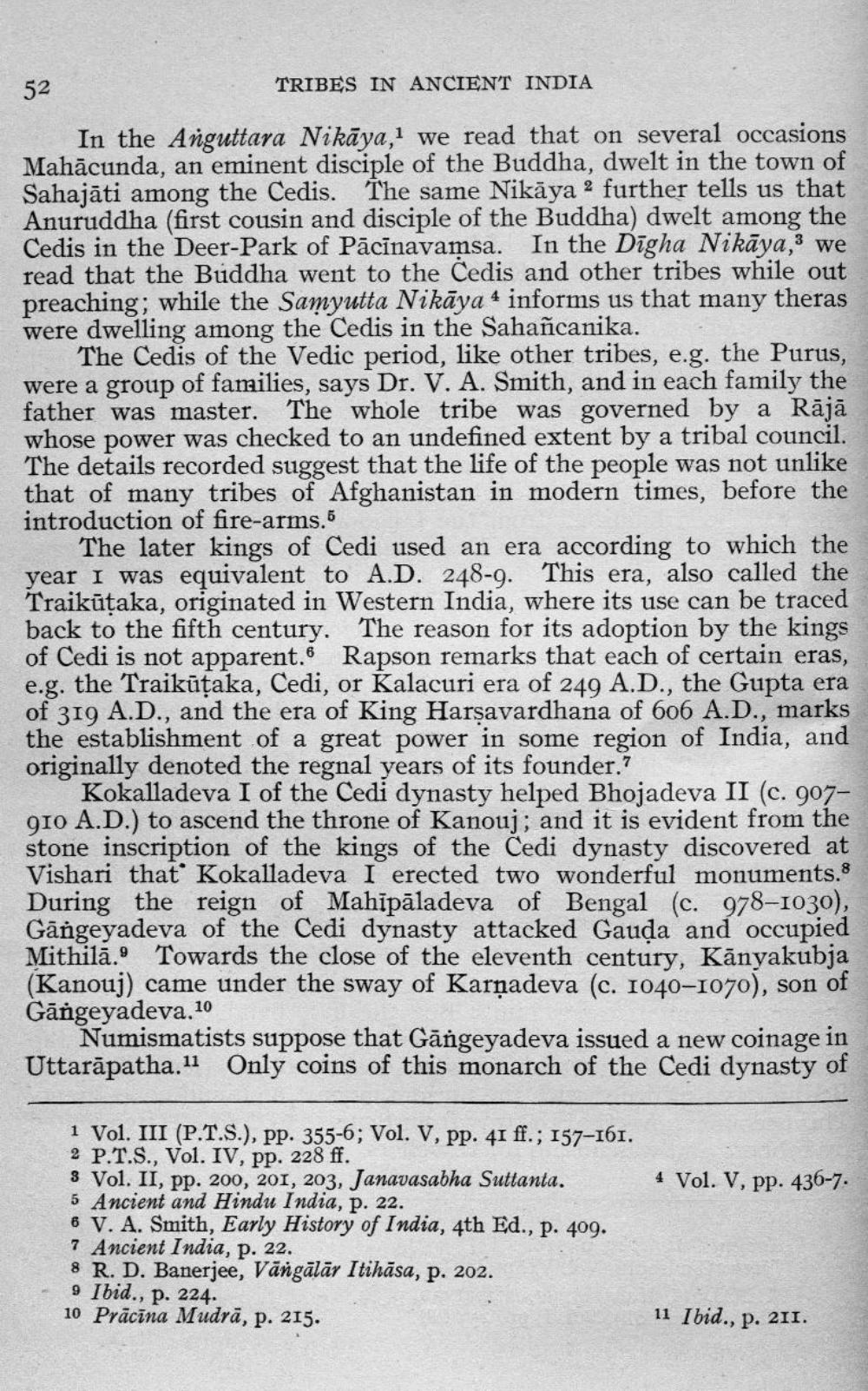________________
52
TRIBES IN ANCIENT INDIA
In the Arguttara Nikāya,1 we read that on several occasions Mahācunda, an eminent disciple of the Buddha, dwelt in the town of Sahajāti among the Cedis. The same Nikāya 2 further tells us that Anuruddha (first cousin and disciple of the Buddha) dwelt among the Cedis in the Deer-Park of Pācīnavamsa. In the Dīgha Nikāya,3 we read that the Buddha went to the Cedis and other tribes while out preaching; while the Samyutta Nikāya 4 informs us that many theras were dwelling among the Cedis in the Sahañcanika.
The Cedis of the Vedic period, like other tribes, e.g. the Purus, were a group of families, says Dr. V. A. Smith, and in each family the father was master. The whole tribe was governed by a Rājā whose power was checked to an undefined extent by a tribal council. The details recorded suggest that the life of the people was not unlike that of many tribes of Afghanistan in modern times, before the introduction of fire-arms.5
The later kings of Cedi used an era according to which the year I was equivalent to A.D. 248-9. This era, also called the Traikūtaka, originated in Western India, where its use can be traced back to the fifth century. The reason for its adoption by the kings of Cedi is not apparent.6 Rapson remarks that each of certain eras, e.g. the Traikūțaka, Cedi, or Kalacuri era of 249 A.D., the Gupta era of 319 A.D., and the era of King Harşavardhana of 606 A.D., marks the establishment of a great power in some region of India, and originally denoted the regnal years of its founder.?
Kokalladeva I of the Cedi dynasty helped Bhojadeva II (c. 907– 910 A.D.) to ascend the throne of Kanouj; and it is evident from the stone inscription of the kings of the Cedi dynasty discovered at Vishari that* Kokalladeva I erected two wonderful monuments.8 During the reign of Mahīpāladeva of Bengal (c. 978-1030), Gāngeyadeva of the Cedi dynasty attacked Gauda and occupied Mithila. Towards the close of the eleventh century, Kānyakubja (Kanouj) came under the sway of Karņadeva (c. 1040-1070), son of Gāngeyadeva.10
Numismatists suppose that Gāngeyadeva issued a new coinage in Uttarāpatha. 11 Only coins of this monarch of the Cedi dynasty of
4 Vol. V, pp. 436-7.
1 Vol. III (P.T.S.), pp. 355-6; Vol. V, pp. 41 ff.; 157-161. 2 P.T.S., Vol. IV, pp. 228 ff. 3 Vol. II, pp. 200, 201, 203, Janavasabha Suttanta. 5 Ancient and Hindu India, p. 22. 6 V. A. Smith, Early History of India, 4th Ed., p. 409. 7 Ancient India, p. 22. 8 R. D. Banerjee, Vāngālār Itihāsa, p. 202. 9 Ibid., p. 224. 10 Prācīna Mudrā, p. 215.
11 Ibid., p. 211.




